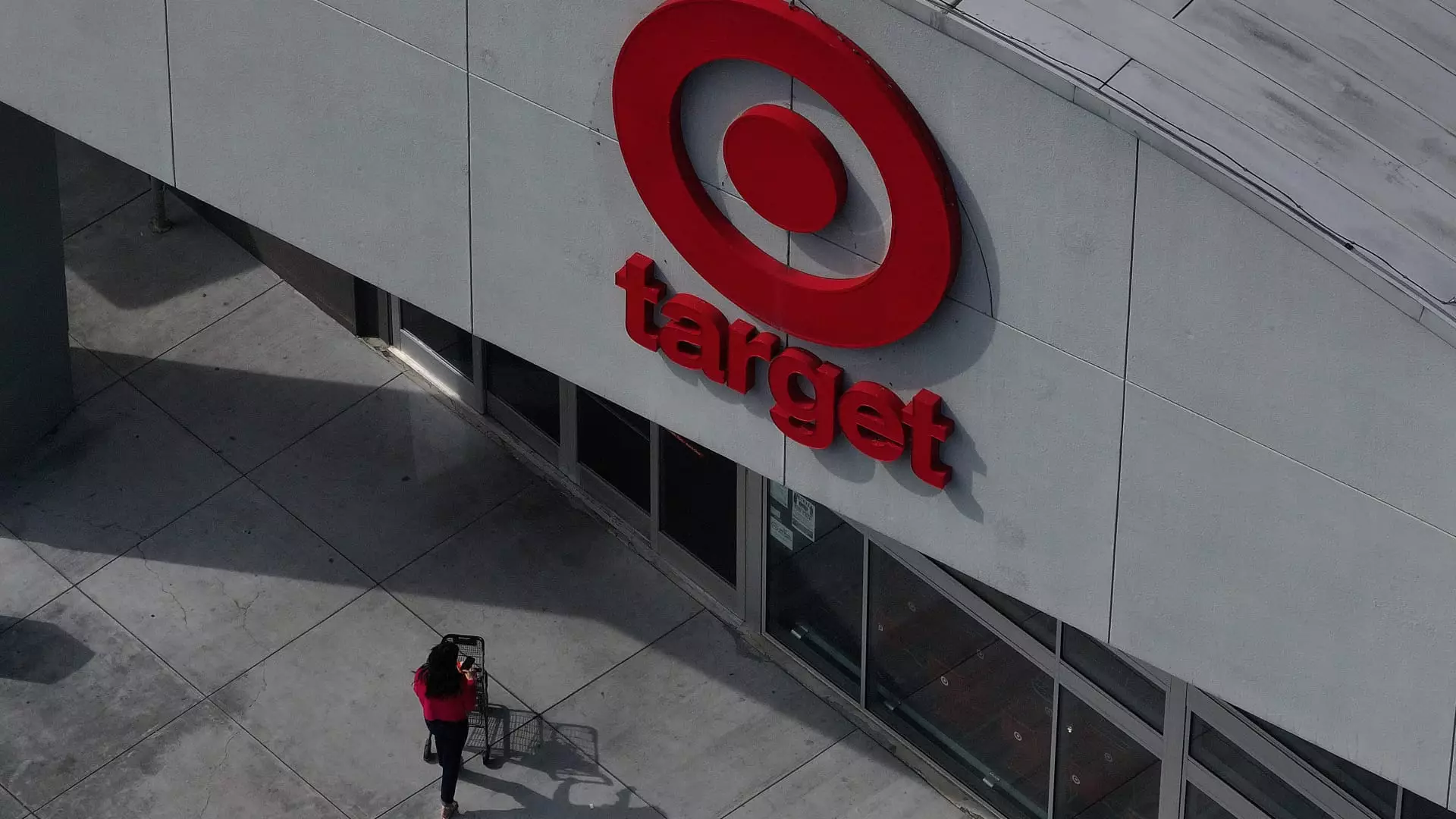In an environment where retail giants are locked in an all-out war for consumer dollars, Target has unveiled an ambitious growth strategy aimed at generating over $15 billion in revenue over the next five years. The action comes as a lifeboat for a retailer that has recently struggled with sales in its high-margin discretionary categories. It’s a bold move, but it raises the question: is this enough to reclaim Target’s competitive edge against behemoths like Walmart and Amazon, or is it merely a band-aid solution?
The skepticism isn’t unfounded. Target’s share prices plummeted more than 5% shortly after the announcement, following a disappointing forecast for the current quarter. With the stock already down nearly 11% this year, this downturn casts a shadow on the effectiveness of such sweeping plans. Investors are wary after Target’s recent fiscal reports revealed a “meaningful” decline in profits, driven by tepid sales figures that, surprisingly, contrasts with Walmart’s soaring growth. This situation hints at a fundamental issue within Target’s existing model that might not be easily remedied by digital expansions or increased product variety.
Target’s plan leverages concepts largely pilfered from its competitors, notably the expansion of its third-party marketplace and in-house advertising capabilities. By aiming to grow third-party digital sales from around $1 billion today to over $5 billion by 2030, Target is taking notes from Walmart’s playbook. Yet, where does this leave Target’s identity? Focusing primarily on recognized brands rather than emerging small businesses speaks to a greater risk of losing its core consumer—those looking for value and novelty in the shopping experience. The notion that shoppers discover new products in-store is slowly becoming compromised in the face of a cookie-cutter marketplace approach that prioritizes scale over diversity.
In fact, Target’s vision of acquiring household names like Peloton or Daily Harvest denotes a shift away from its original ethos. While it aims to attract younger consumers interested in tailored, high-quality products, this tactic could drive clientele into channels better suited for curated selections such as specialty shops or niche online vendors. By not placing robust effort into promoting smaller and distinctive brands, Target may end up alienating its demographic that values exclusivity and individuality—a precarious path indeed.
Target’s leadership acknowledges a regression in some foundational retail principles. In their investor meeting, COO Michael Fiddelke candidly stated, “Retail is about product, and the best product at the best value wins.” This acknowledgment is refreshing but also points to a recognition of shortcomings that have allowed competitors to edge ahead. Freshness in products, an expansive range of styles, and value pricing are what typically draw consumers into stores. Yet, Target’s struggle to stimulate sales might highlight that it’s not merely a matter of offering new products but catering to evolving consumer preferences.
Target plans to enhance its gaming, sports, and toy assortment—essentially areas where it has observed lagging performance. Additionally, expanding its food product lines with notable collaborations suggests an understanding of contemporary consumer trends. Yet, will this translate to improved foot traffic or online orders? The anticipation of unveiling 600 new food and beverage items across its private labels suggests a well-thought-out strategy, but it’s imperative to ask if this will capture the attention of an increasingly discerning clientele.
One of the most critical factors affecting Target’s future trajectory is its supply chain efficiency. The retailer is investing a staggering $4 to $5 billion into improving logistics and technology to minimize out-of-stock issues, which should, theoretically, enhance operational responsiveness and customer satisfaction. This emphasis on speed is wise, given the increasing competition from e-tailers like Shein and Temu. However, it also represents a herculean task, as changing the entire supply chain dynamics is no small feat and can lead to pitfalls if not expertly managed.
The challenge is clear: with every effort to soothe consumer frustrations regarding product availability, Target must also contend with the long-term implications of these investments. Will the effort and financial outlay yield tangible customer loyalty and brand differentiation, or will it dissolve into an echo of efforts previously made by its rivals?
In a retail landscape defined by fierce competition and shifting consumer expectations, Target’s future hinges on a delicate balancing act. The ambitious $15 billion revenue growth plan may have potential, but whether it can forge meaningful change amidst an atmosphere of changing consumer behavior remains to be seen.

